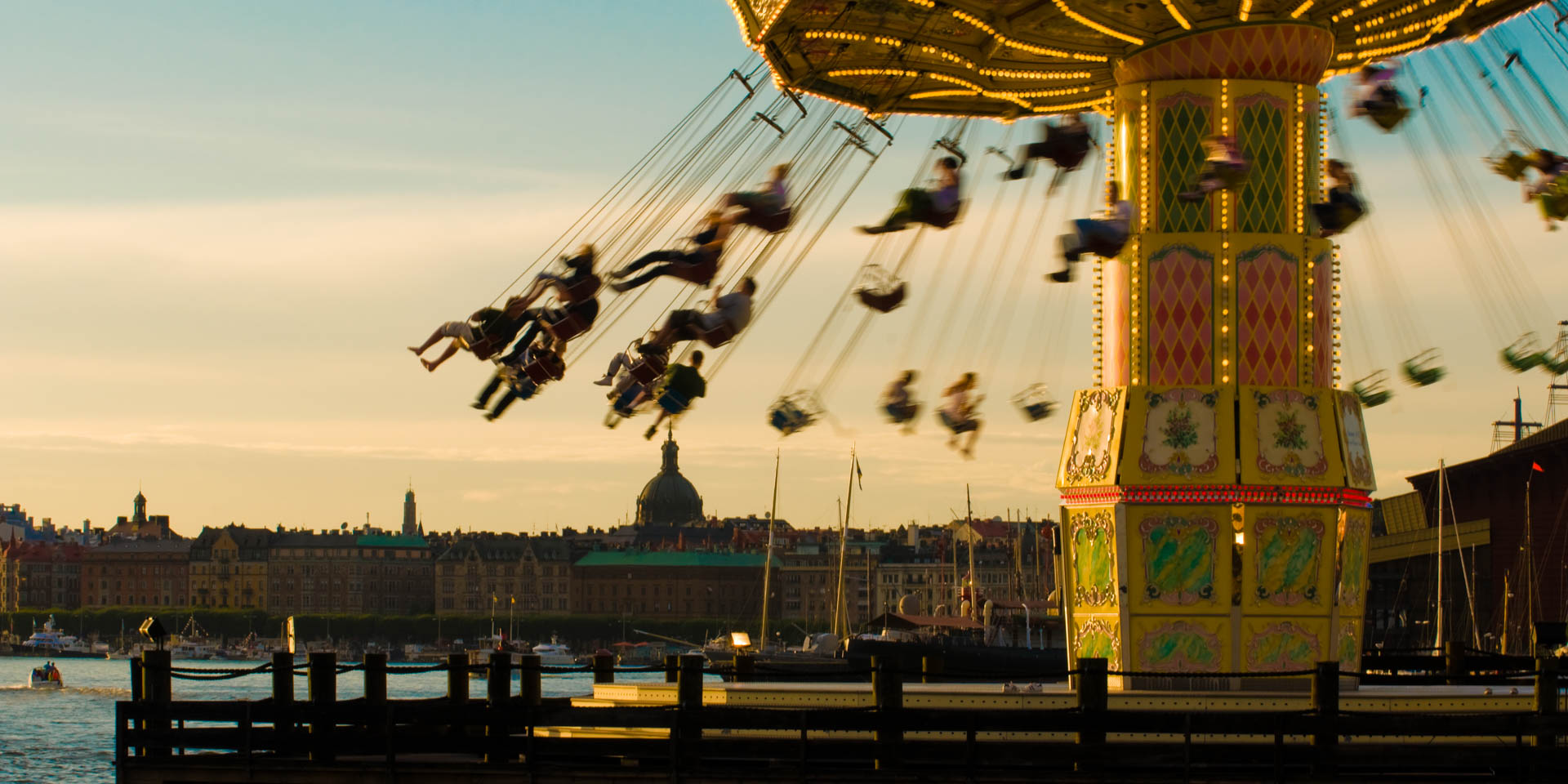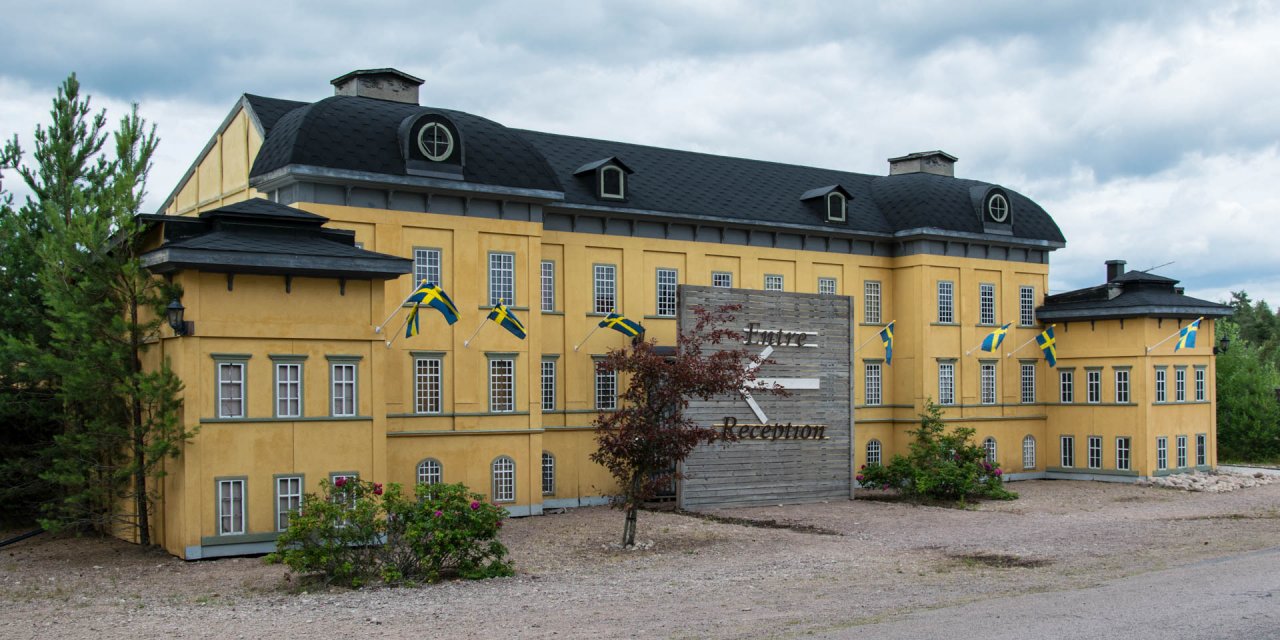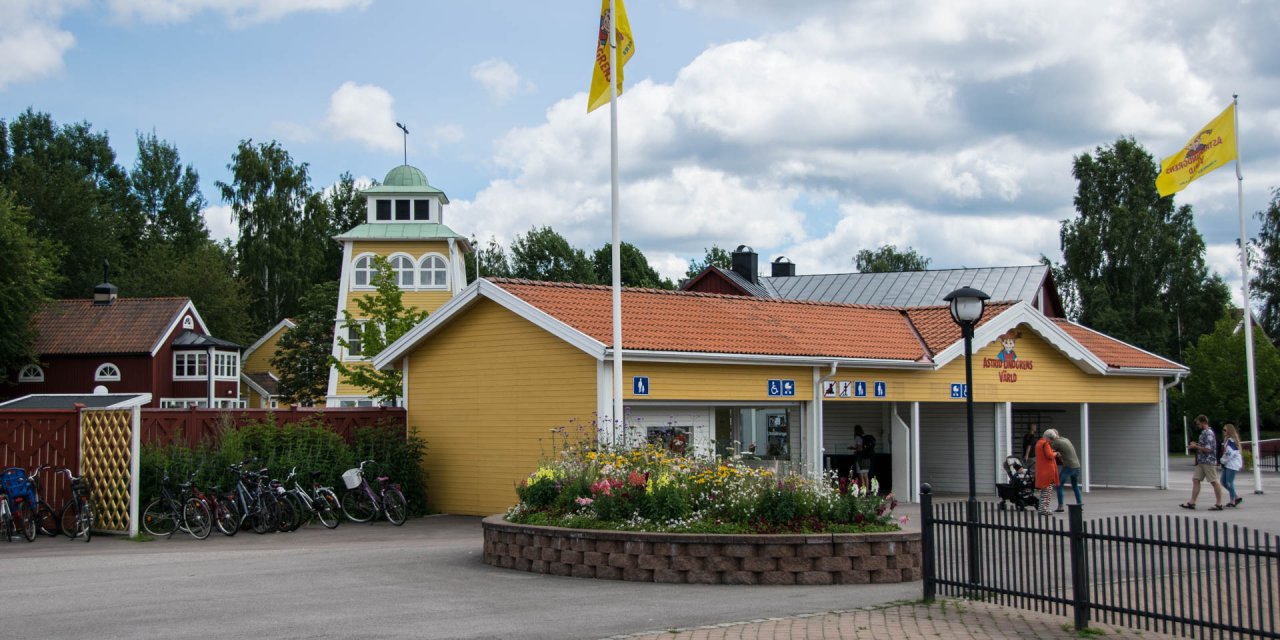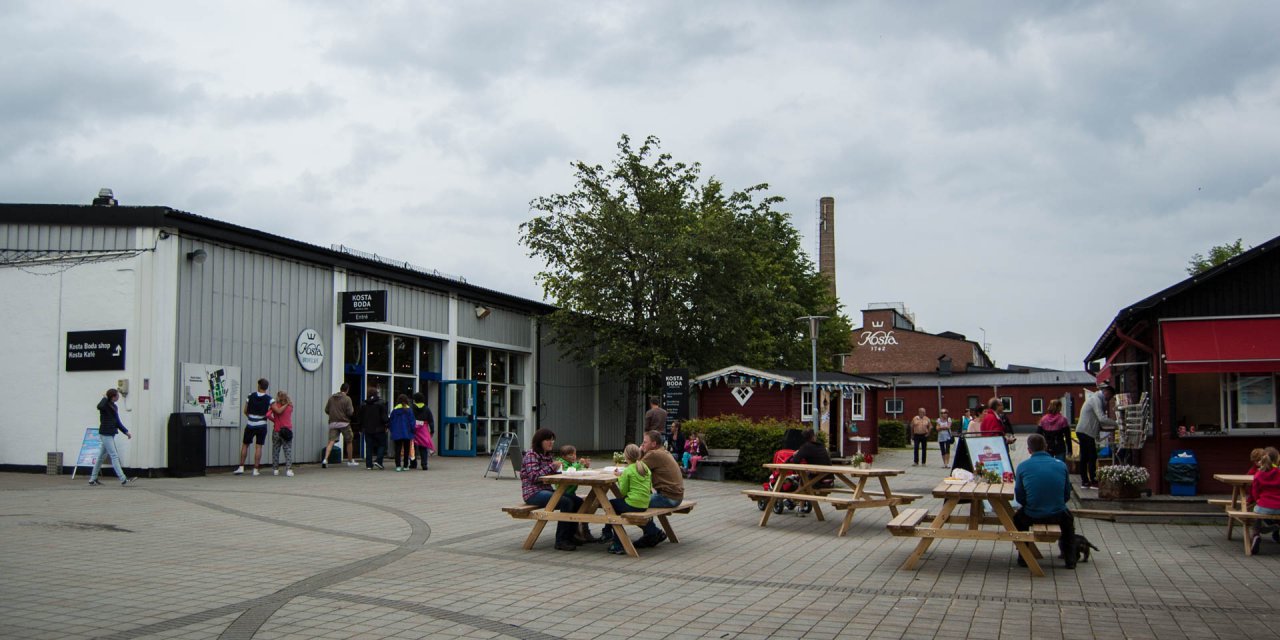

Gröna Lund
Large amusement park in Stockholm
The large amusement park Gröna Lund is located directly on the western shore of the island Djurgården in Stockholm and is the oldest amusement park in Sweden.
Gröna Lund, popularly known as Grönan, was founded in 1883 by Jacob Schultheis from Berlin and is now one of the biggest attractions in Stockholm with around 1.5 million visitors a year.
Something that Gröna Lund, unlike other amusement parks, does not have is space. But it is even more exciting to see how the park operators managed to accommodate such a high density of attractions on an area of less than 5 hectares. After all, Gröna Lund has more than 30 rides, including seven roller coasters. In addition, there are other attractions as well as a large stage on which up to 50 concerts of national and international music stars take place every season.
The densely packed and partly intertwined attractions create the special charm of Gröna Lund – a real fair atmosphere, in a breathtakingly beautiful location with a view of the city panorama of Stockholm. And just like at a big fair, Gröna Lund has not only amusement rides but also various small restaurants, snack and candy stands as well as a beer garden and lots of games and lottery stalls.
The attractions of Gröna Lund
The small street Lilla Allmänna Gränd divides the amusement park but it is connected via the pedestrian bridge Spanska Trappan (english: The Spanish stairs). The area east of the road is clearly smaller than the part directly on the water and is called Lilla Området (english: The small area).
The rides and attractions in Lilla Området are designed for children and include a children's Ferris wheel, a small freefall tower, a historic carousel which is over 120 years old and an old house with the stories of Pettersson & Findus as its theme.
Among the main attractions of Gröna Lund are the ghost train Blå Tåget (English: The blue train), a classic from 1935, the three different free fall towers and the skyflyer Eclipse, which is one of the highest in the world with 121 meters. Around one million visitors a year get an adrenalin kick on the Jetline roller coaster and the heart of Gröna Lund, the fun house Lustiga Huset, first opened in 1917, is the park's second most popular attraction after the Jetline.
Visit Gröna Lund
Gröna Lund is a pure summer operation and only open from the end of April to the end of September. The opening hours vary depending on month and weekday and are longest at the weekends in the high summer, when the park is open from 10 am to 11 pm.
The access to most rides is designed in such a way that they can also be used by handicapped people. They pay the full entrance fee, but admission is free of charge for the attendants. Adapted toilets are located at six different locations in the park. With the exception of assistance dogs, no dogs are allowed in Gröna Lund.
The history and development of Gröna Lund
Gröna Lund has a long history as a place of entertainment dating back to the 18th century. Originally, Gröna Lund was a large garden, east of today's amusement park. Later there was a guesthouse nearby called Gröna Lund, which was even sung about in some songs by the poet and composer Carl Michael Bellman.
In the early 19th century, several inns and pubs as well as small theatre stages for Punch and Judy, comedians and musicians established there. In 1883, Jacob Schultheis, a carpenter from Berlin, leased the grounds and built the Gröna Lund amusement park. When Schultheis died in 1914, his widow and his illegitimate son Gustaf Nilsson took over the park.
In 1924, Johan Lindgren's competitor Nöjesfält established itself in the open space in the immediate vicinity of Gröna Lund and a fierce competition broke out between the two amusement parks. In the course of the company and family feud a romance developed between Ninni, the daughter of Gustav Nilsson and John, the son of the competitor Johan Lindgren.
It was only after the death of both fathers in 1940 that the two made their relationship public and married in 1942. They initially ran Nöjesfältet together until they closed the park in 1957 and from then on operated Gröna Lund together. In 1981, their son John Junior became the manager of Gröna Lund and then his daughter Nadja managed the company until it was sold to the group Parks & Resorts Scandinavia in 2001.



